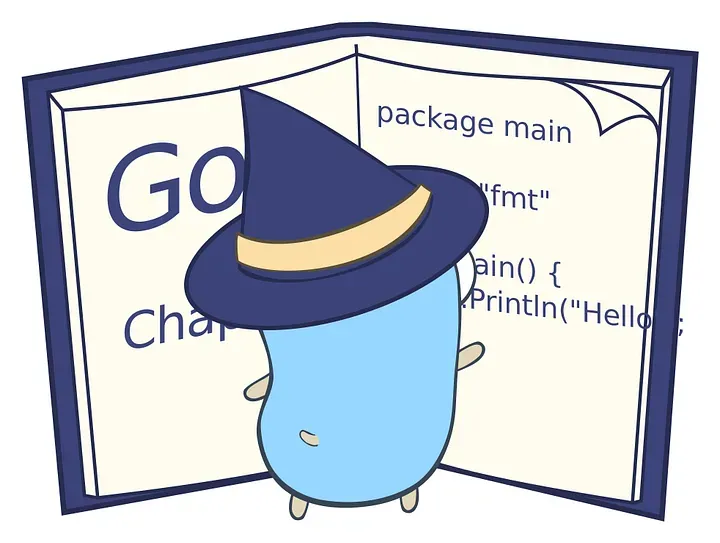Transitioning from object-oriented programming (OOP) languages to Go can be initially disorienting. In OOP, methods are intrinsically linked to objects, forming the core of object behavior. Go, while supporting methods, takes a more flexible approach, emphasizing functions as the fundamental building blocks.
Functions: The Versatile Workhorses
Functions in Go are independent entities that encapsulate specific logic. They operate on data without being tied to a particular type. This characteristic aligns them more closely with mathematical functions than OOP methods.
Example:
func calculateArea(length, width float64) float64 {
return length * width
}This function computes the area of a rectangle, a generic operation not inherently tied to any specific type.
Methods: Behavior Bound to Types
In contrast, methods are functions associated with a particular type. They have a receiver, which is a value or pointer of that type. This allows methods to access and modify the receiver’s state.
Example:
type Rectangle struct {
Length float64
Width float64
}
func (r Rectangle) Area() float64 {
return r.Length * r.Width
}Here, the Area method is specific to the Rectangle type and can access its Length and Width properties.
When to Choose Functions or Methods
The decision between functions and methods hinges on the nature of the code:
Functions:
- Utility operations: Functions that perform general-purpose tasks, often independent of specific data structures. For example, mathematical calculations, string manipulation, or input/output operations.
- Helper functions: Functions designed to assist other functions or methods, breaking down complex logic into smaller, manageable units. These functions often encapsulate reusable logic.
- Independent calculations or transformations: Functions that perform computations or data transformations without relying on external state. They are typically pure functions, meaning they produce the same output for given inputs without causing side effects.
- Algorithms or mathematical operations: Functions that implement specific algorithms or mathematical formulas. These functions often have well-defined inputs and outputs and are essential for many applications.
- Closures: Functions that capture variables from their enclosing scope. This enables creating functions with stateful behavior, often used for callback functions or higher-order functions.
Methods:
- Behavior intrinsically linked to a type’s properties: Methods that define the actions an object of a particular type can perform. They are closely tied to the object’s state and behavior.
- Operations modifying a type’s internal state: Methods that change the values of an object’s fields. These methods are often used for mutating operations.
- Implementing interfaces: Methods that fulfill the contract defined by an interface. This allows for polymorphic behavior, where different types can be treated as the same interface type.
- Accessors and mutators: Methods that provide controlled access to an object’s fields. Accessors retrieve values, while mutators modify them.
- Factory methods: Methods that create and return instances of a type or related types. They are often used for object creation and initialization.
By understanding these distinctions and use cases, you can effectively choose between functions and methods to create well-structured and efficient Go code.
When to Consider a Standalone function:
Let me give you a sample, let assume you want to filter some orders based on the bussiness logic which one do you prefer?
I would prefer a standalone function , why ?
Standalone Function Advantages:
- Reusability: The function can be used with different order lists or in various contexts.
- Testability: It’s easier to write unit tests for a standalone function, isolating its logic.
- Decoupling: Separates filtering logic from the Order struct, improving code organization.
- Flexibility: Can be adapted to different filtering criteria without modifying the Order struct.
Example:
type Order struct {
ID int
Amount float64
Status string
}
func FilterOrders(orders []Order, filterparams FilterParams) []Order {
filteredOrders := []Order{}
for _, order := range orders {
// some filtering logic
}
return filteredOrders
}sounds reasonable in comparison to tied it to order?
When to Consider a Method:
- If the filtering logic is highly specific to the Order struct and unlikely to be reused.
- If you want to encapsulate filtering behavior within the Order type for object-oriented design.
However, even in these cases, consider creating a helper method within the Order struct and using a standalone function as the primary filtering logic to maintain flexibility and testability.
In conclusion, while both approaches are possible, using a standalone function for order filtering generally provides more flexibility, reusability, and testability.
Beyond the Basics: Pointers and Value Receivers
Both functions and methods can have value or pointer receivers. This distinction impacts how arguments are passed:
- Value receiver: A copy of the receiver is passed, preventing modifications to the original value.
- Pointer receiver: A pointer to the receiver is passed, allowing modifications to the original value.
Example:
type Point struct {
X, Y int
}
func (p Point) ScaleBy(factor int) {
p.X *= factor // Modifies a copy
}
func (p *Point) ScaleByPointer(factor int) {
p.X *= factor // Modifies the original
}Using pointer receivers is often preferred when methods need to modify the receiver’s state.
Leveraging Go’s Flexibility
While Go supports methods, it doesn’t enforce the strict object-oriented paradigm found in languages like Java or C++. This flexibility enables a more functional style when suitable. By understanding the nuances of functions and methods, you can write efficient and expressive Go code.
Conclusion:
Functions and methods are the building blocks of Go programs. Understanding how to use them effectively is crucial for writing clean, efficient, and maintainable code. Functions offer flexibility and reusability, while methods provide a way to define behavior specific to a type. By combining these tools and exploring advanced concepts like closures, interfaces, and variadic functions, you can create complex and powerful applications in Go.
Whether you’re a beginner or an experienced programmer, mastering functions and methods will significantly improve your ability to build robust and scalable software solutions.
